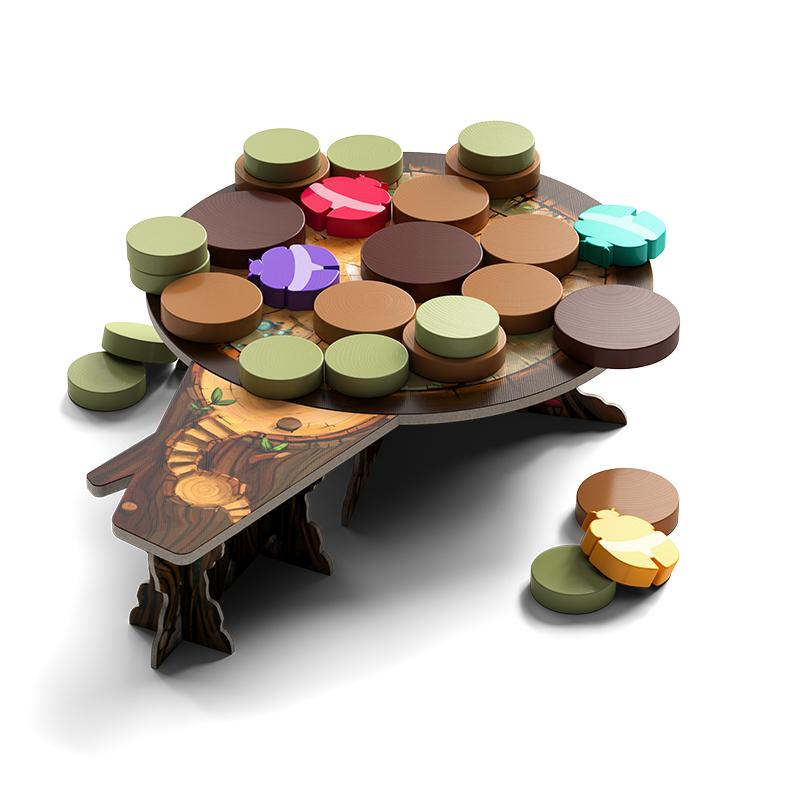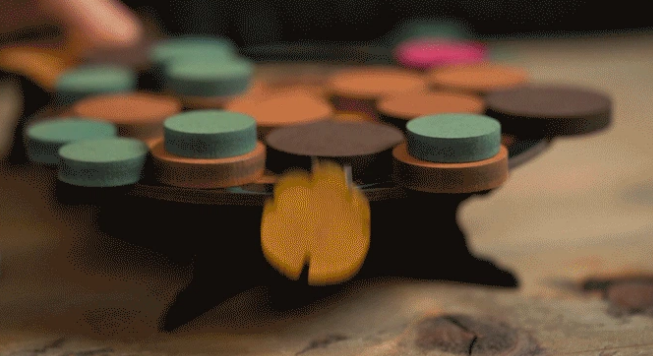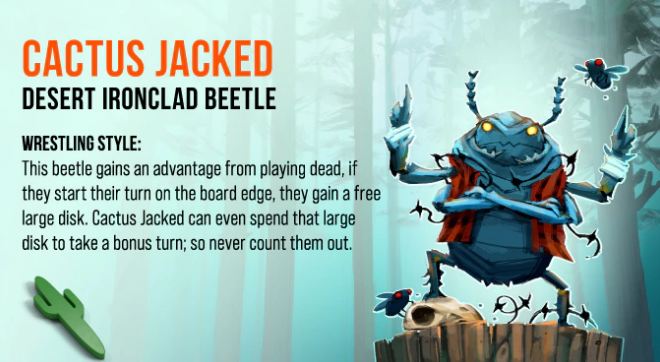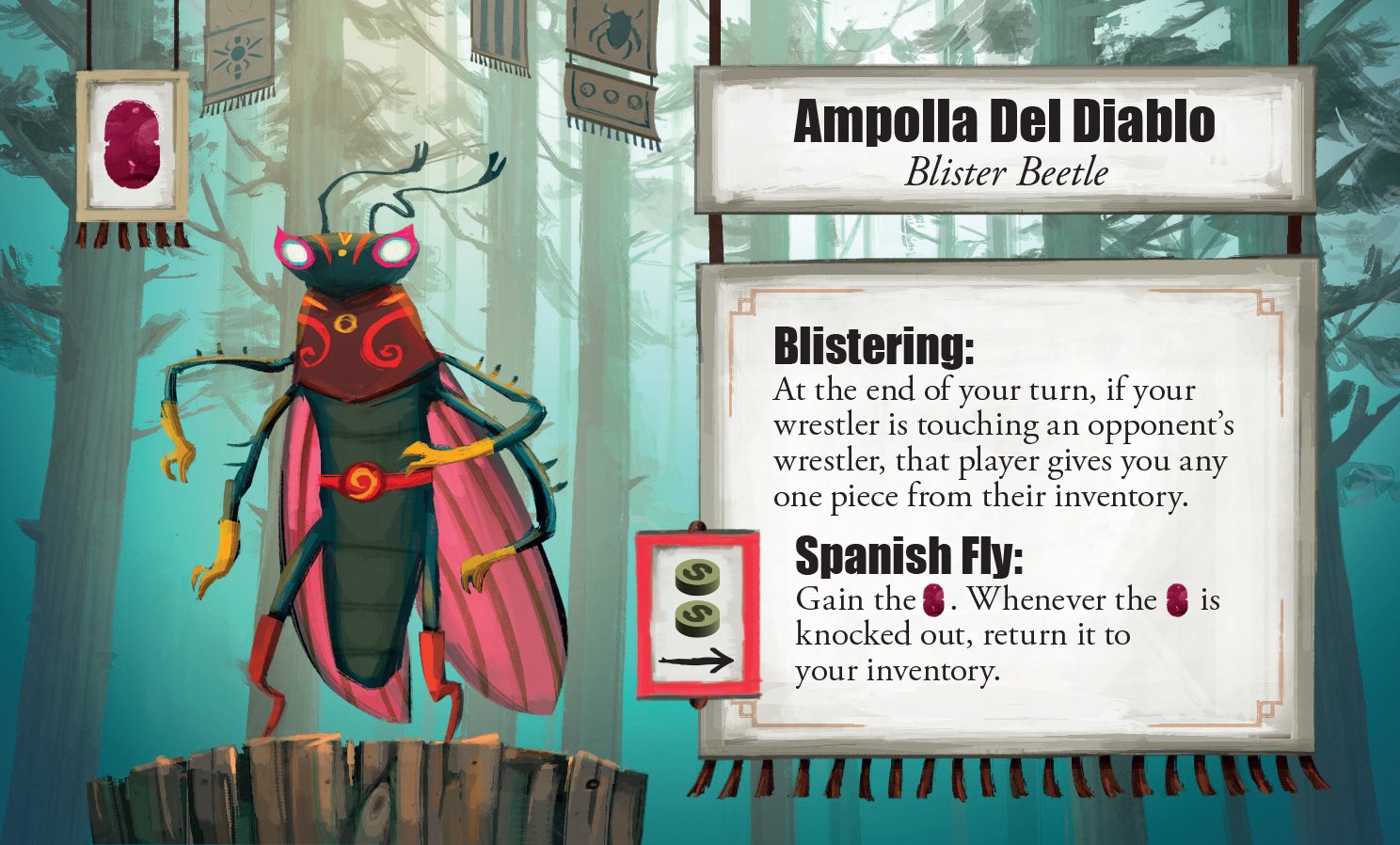As part of our October Spotlight on Kabuto Sumo, we strive to inform readers of little extra tidbits surrounding the game. Games are made by people, and one of those tidbits we enjoy is learning a little bit more about the people behind them. Some designers shy away from the public stage, while others enjoy being front and center.
When it comes to effusive newcomer Tony Miller, he is more than willing to chat about games, though the act of having the spotlight turned on to his own material is still a relatively new phenomenon he’s adjusting to. Long an advocate and source of encouragement for other designers and individuals within the hobby, it has only been within the last couple years when some of his own designs have started finding their way past prototype stages and into excited hands and ready kitchen tables. As with many designers, the first few publications can bring with it a mix of exuberance and trepidation, anxiety and relief. It can be a whirlwind of both joy and doubt, fluctuating wildly from one moment to the next. His own journey was no different; it’s an experience he has now witnessed firsthand.
However, in a way this internalized battle between enthusiasm and trepidation is rather fitting for his newest title, Kabuto Sumo. In this brisk and colorful glimpse into the hidden world of insect fighting, players in this game are various species of beetles jousting against one another as they demonstrate their strength, supremacy, and the insect equivalent of suplex slams as part of the World Insect Wrestling Championship. Utilizing a series of special moves (reflecting their respective real-world abilities), over a scant few rounds each player slides various wooden pieces across a raised board in an attempt to corner your opponent, disrupt their attacks, and, ultimately, try to knock them out of the ring entirely. Using a blend of tactical skill and dexterity-based luck, Kabuto Sumo enables micro-sized contests of dominance and tenacity in a manner that’s quick to learn and easily replayable for a wide swath of gamers.
And if your character can do it with a bit of flair, that certainly doesn’t hurt. Doubly so if there’s a cape involved…
With Kabuto Sumo, each player is trying to shove the others out of the ring and take the title, but due to the nature of its existence we’re all winners regardless of the outcome. With its uncommon mechanical elements alongside high caliber production quality, enticing artwork, and an amusing flavor merging of insect fighting and pro wrestling, Kabuto Sumo seemed like a game worth investigating the origins of from the outset, and to that we weren’t disappointed. We already knew that Kabuto Sumo is concise, straightforward, entertaining, and easy to sink your mandibles into. But as we also learned once we finally got a chance to chat with Tony in between his other commitments as a designer, boutique publisher, and parent, its inception makes it an even more appreciable contribution to the hobby.
That, and just how many wrestling nods he really did try to sneak into the game. We share part of that conversation with you today.
Enjoy!
Round One Questions
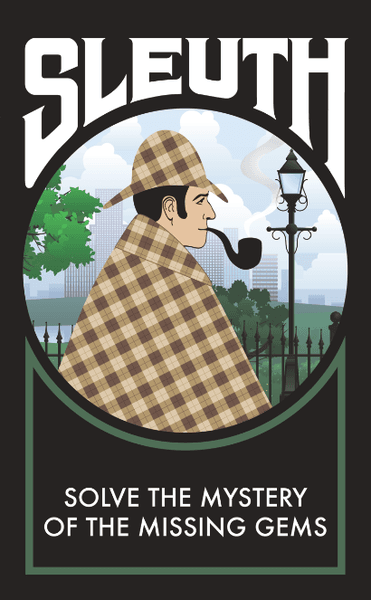 CR: What was your Gateway Game?
CR: What was your Gateway Game?
This is a twofold answer because I kind of have two Gateway games – one that hooked me as a child and then one that brought me into the hobby again as an adult. My childhood game was Sleuth from Sid Sackson. My dad brought it home one day because he was tired of playing Clue, and we ended up playing our copy of Sleuth until the cards wore out. Pandemic brought me back into the hobby as an adult because the social aspects of cooperative games were something that my extroverted soul craved even without knowing that they existed.
CR: What was the last game you really enjoyed playing (besides your own titles)?
Gaming has been slim pickings during the pandemic, but Union Station from Travis Hill was absolutely lovely and I loved it so much that New Mill, my publishing company, chose to publish it. Dungeon Mayhem has also been a big hit with my son and I in recent months.
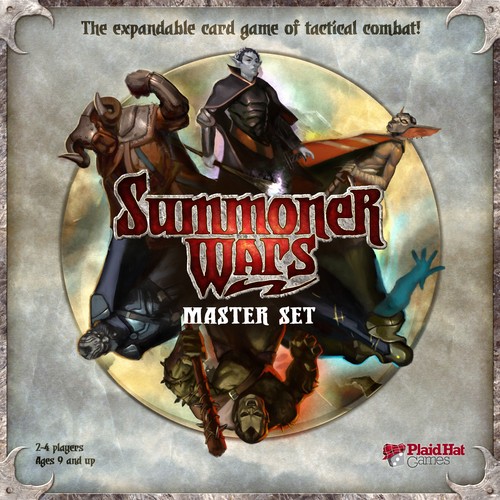 CR: How big is your game collection?
CR: How big is your game collection?
I no longer enter expansions as distinct entries on Board Game Geek, so I can say that I have 453 plus expansions for most games that I own that have them. Counting Sentinels of the Multiverse, Summoner Wars, Netrunner, Vast, Root, and the BattleCon series most of my collection is likely expansions.
CR: What is your favorite type of game to play?
I am truly an omni-gamer when it comes to gaming. I will play the heaviest of the heavy or the lightest, most breezy game. The people that I play it with matter far more than the cardboard on the table for me!
CR: How do you feel about Monopoly?
When played by the rules, it’s not a bad game and the quick game rules are actually pretty good. I don’t love it, mostly because it is very efficient at showcasing the issues with capitalism that the original designer meant to highlight and I don’t find that particularly fun.
CR: Yeah, that part does sometimes get overlooked…somehow.
On Kabuto Sumo
CR: One of the central mechanics of Kabuto Sumo is pushing the contents of the board around similar to those classic coin pushing machines. So let’s start there: how were you inspired to use that idea in this particular game, and more importantly…did you ever have any luck at them? We sure didn’t.
I am terrible at coin pushing games, though I think that is largely the point. My son was the initial inspiration and his love of those devilish money-eaters was where it started. Upon entering an arcade, those games are the first that he seeks out and if left unsupervised are likely where all of his money will end up. When the waterfall of coins do happen though, the look on his face is magical. So I made it happen a lot more often in Kabuto Sumo. The entire game is a love letter to him, so much so that we included “This game is for Raphael” in the rulebook. Connecting it to Japanese rhinoceros beetles and their pushing games of dominance and the noble sport of Sumo came after I was sure that the mechanism was a hit with him.
CR: What would you say best sets Kabuto Sumo apart from the bevy of other lightweight dexterity games out there?
The primary pushing mechanism isn’t used in the dexterity space as much as more common ones like stacking or flicking which makes it more novel. It is present in a few great games these days, but all of them use it quite differently, with some even being all about NOT pushing things off. Nacht der Magier, Push a Monster, and Redcap Ruckus, for example. I think that it’s a great family game because the junior league insects offer a quick, get into the action experience with low rules overhead, but once you add them in the special abilities of the various insects can be used tactically by more advanced / adult game groups. This means that the game can meet you where you are skill level wise and even potentially grow with you.
CR: You’re on the record for being a big wrestling fan. How much of that flavor were you able to squeeze into Kabuto Sumo? Did you manage to sneak in any Easter Eggs?
As much as I possibly could! Cactus Jacked is an obvious allusion to the dangerous outlaw version of Mick Foley. The Insect’s Champion, The Pebble is an homage to The Rock in both moniker and him being a Hercules beetle with the Rock having played Hercules in a big budget movie. The Composter is our Undertaker, The Nature Bug is of course a reference to Ric Flair (the former Black Scorpion don’t you know), and The Great Metamorphosis is a Great Muta reference complete with green mist as a bombardier beetle.
Not all of it is wrestling however, with Sisyphus, the dung beetle, Teddy R, the stick bug, and Nightmare on Elm trees, the Asian Giant Hornet. The most important reference in the game to me however is the Japanese rhinoceros beetle (called kabutomushi in Japanese), Kimarite, who represents the beetle and sport that the game takes its name from.
CR: On that same note, how did the idea come about to combine wrestling with insect fighting?
Insect wrestling, particularly among beetle species, is incredibly common. I was actually watching a New Japan wrestling event and part of a video package featured this titanic struggle between two Japanese rhinoceros beetles and I instantly fell down the Wikipedia rabbit hole learning everything that I could about these amazing insects. They are completely harmless to humans and even kept as pets by children who often marvel at their contests of strength. The shoving matches that they engaged in resembled the uniquely Japanese art of Sumo to me, and from that point forward I couldn’t imagine any other theme working.
CR: The core part of the game primarily involves beetles specifically, though as you mentioned you also expanded out to a handful of other insects – and leads to the prospect of doing others down the line. Were there any insect combatants specifically you really wanted to make sure were included in Kabuto Sumo for one reason or another? Were there any on that list that you sadly weren’t able to include?
The kabutomushi was the only insect that I absolutely had to have in the game, and we took great pains to make sure that beetles were the primary focus in the base. Beetles are in the zoological order Coleoptera, which is the largest order constituting almost 40% of insects and 25% of all known animal life-forms, so I felt like giving them their due. Once we moved to the expansion, we chose to include other insect types so that we could expand the design space for special abilities. The final list that we compiled contained more insects than we could include in the rosters given that each comes with its own unique wooden piece. We have many more insects – both beetles and not – in the wings, but I don’t want to get too deep into which because I am still hoping that they can make an appearance down the line.
CR: The game is stated to be a 2-4 player nudgematch. Was the original design more of a head-to-head game or did you always envision it to be four players from the start?
The game was originally designed and playtested with my son, so it was a heavily tested two player game when it was signed. I had just started tinkering with three and four player setups at the time and my amazing developers really helped me test and balance them.
CR: It’s been said elsewhere that the components of the game needed to be pretty sturdy in order for the game to actually function correctly. How many production tests did you go through before you knew it was where you wanted it?
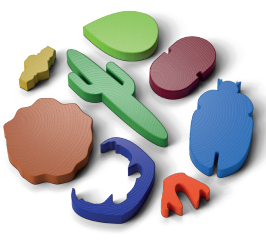 This is question my publisher and the manufacturer could better answer, but I can say that in my initial tests with my son it was clear that big, chunky wood was better for him than any other material that I tried. A raised platform was also a necessity so that ‘a piece that has fallen off the board’ was clear to everyone. Many arguments with my son made it very clear that this was a requirement. I think that BoardGameTables and Panda did an excellent job in producing a version of the game that will stand up to some abuse but that also manages to look incredible on a table!
This is question my publisher and the manufacturer could better answer, but I can say that in my initial tests with my son it was clear that big, chunky wood was better for him than any other material that I tried. A raised platform was also a necessity so that ‘a piece that has fallen off the board’ was clear to everyone. Many arguments with my son made it very clear that this was a requirement. I think that BoardGameTables and Panda did an excellent job in producing a version of the game that will stand up to some abuse but that also manages to look incredible on a table!
CR: You mentioned New Mill Industries, which you’re a co-publisher of. Having now published several of your designs on Kickstarter, both through other publishers, as well as your own, what was the most unexpected thing you learned from this campaign – either in terms of something new compared to your previous campaigns or something you took with you into subsequent ones?
In the Kabuto Sumo campaign, I really learned how valuable it was to include people in the process from the very beginning. There were people who backed Kabuto Sumo that had seen the first images of my prototype on Twitter and seen it grow and change and iterate with each new bit of knowledge. They helped drive me to the finish line and showed up in a big way on day one. A Kickstarter that builds momentum on day one is far more likely to succeed and thrive, and the Kabuto Sumo campaign did both in a big way!
CR: Finally, let’s say through some “accident” you found yourself small enough to participate as a contestant in Kabuto Sumo. What would your name be, and what would be your signature move?
At 5’3″ I am nearly small enough already, but if I were to suddenly find myself at insect size, then I would want to be a violet ground beetle (carabus violaceus) since it’s my favorite color. I would call myself Ultraviolent and likely use weapons and hardcore tactics to make up for my lack of size. It’d also be a great reference to the old CZW Ultraviolent Underground Championship…
Photo Credits: Kabuto Sumo cover and photos by BoardGameTables.com; Violet Ground Beetle by Wikipedia.

